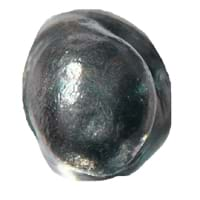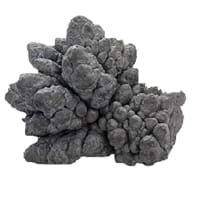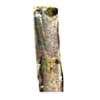Beryllium Lead Comparison
Periodic Table
Symbol
Be
Pb
Group Number
2
16
14
4
Period Number
2
6
Block
s block
p block
Element Family
Alkaline Earth
Post-Transition
CAS Number
7440417
99+
7439921
99+
Space Group Name
P63/mmc
Fm_ 3m
Space Group Number
194.00
5
225.00
2
Facts
Interesting Facts
- Beryllium is best anti corrosion metal.
- Beryllium is the lightest metal and still it is stronger than steel.
- It also finds various applications in Nuclear reactors as a reflector.
- Galena mineral contains almost 87% of Lead metal in it, Galena is sulfide mineral.
- The best available source of Lead metal today is by recycling automobile batteries.
Sources
Earth's crust, Found in Minerals, Mining, Ores of metals, Ores of Minerals
Earth's crust, Found in Minerals, Mining, Ores of metals, Ores of Minerals
History
Who Discovered
Louis Nicolas Vauquelin
Unknown
Discovery
In 1797
In Middle Easterns (7000 BCE)
Abundance
Abundance In Universe
1 * 10-7 %
23
1 * 10-6 %
16
Abundance In Sun
~0.00000001 %
29
~0.000001 %
18
Abundance In Meteorites
0.00 %
99+
0.00 %
23
Abundance In Earth's Crust
0.00 %
35
0.00 %
26
Abundance In Oceans
0.00 %
39
0.00 %
22
Abundance In Humans
0.00 %
19
0.00 %
8
Uses
Uses & Benefits
- Its alloys with copper or nickel are used in manufacturing Gyroscopes, springs, electrical contact and non sparking tools.
- Beryllium Alloys are used as a material for aircraft, missiles, spacecraft and satellite.
- It is also used in insecticides, hair dyes and as an anti-knocking additive for petrol. But all these are banned by the government as Lead metal is known for detrimental to health.
Industrial Uses
Aerospace Industry, Ammunition Industry, Automobile Industry, Electrical Industry, Electronic Industry
Chemical Industry, Electrical Industry, Electronic Industry
Medical Uses
NA
Surgical Instruments Manufacturing
Other Uses
Alloys
Alloys
Biological Properties
Toxicity
Toxic
Toxic
Present in Human Body
Yes
Yes
In Blood
0.00 Blood/mg dm-3
32
0.21 Blood/mg dm-3
11
In Bone
0.00 p.p.m.
32
30.00 p.p.m.
10
Physical Properties
Melting Point
1,278.00 °C
36
327.50 °C
99+
Boiling Point
2,970.00 °C
32
1,740.00 °C
99+
Appearance
Physical State
Solid
Solid
Color
White Gray
Gray
Luster
Metallic
Metallic
Hardness
Mohs Hardness
5.50
7
1.50
18
Brinell Hardness
590.00 MPa
21
38.00 MPa
99+
Vickers Hardness
1,670.00 MPa
4
Not Available
Speed of Sound
12,890.00 m/s
2
1,190.00 m/s
99+
Optical Properties
Allotropes
No
No
α Allotropes
Not Available
Not Available
β Allotropes
Not Available
Not Available
γ Allotropes
Not Available
Not Available
Chemical Properties
Chemical Formula
Be
Pb
Isotopes
Known Isotopes
9
29
35
4
Electronegativity
Pauling Electronegativity
1.57
24
1.87
13
Sanderson Electronegativity
1.81
12
2.29
4
Allred Rochow Electronegativity
1.47
14
1.55
11
Mulliken-Jaffe Electronegativity
1.54
12
2.41
2
Allen Electronegativity
1.58
23
1.85
8
Electropositivity
Pauling Electropositivity
2.43
30
1.67
99+
Ionization Energies
1st Energy Level
899.50 kJ/mol
7
715.60 kJ/mol
31
2nd Energy Level
1,757.10 kJ/mol
23
1,450.50 kJ/mol
99+
3rd Energy Level
14,848.70 kJ/mol
2
3,081.50 kJ/mol
23
4th Energy Level
21,006.60 kJ/mol
2
4,083.00 kJ/mol
35
5th Energy Level
Not Available
6,640.00 kJ/mol
20
Electrochemical Equivalent
0.17 g/amp-hr
99+
3.87 g/amp-hr
9
Electron Work Function
4.98 eV
6
4.25 eV
21
Other Chemical Properties
Corrosion, Ionization, Radioactive Isotopes
Anti Corrosion, Ionization, Radioactive Isotopes
Atomic Properties
Atomic Number
4
99+
82
34
Electron Configuration
[He] 2s2
[Xe] 4f14 5d10 6s2 6p2
Crystal Structure
Hexagonal Close Packed (HCP)
Face Centered Cubic (FCC)
Crystal Lattice
HCP-Crystal-Structure-of-Beryllium.jpg#100
FCC-Crystal-Structure-of-Lead.jpg#100
Atom
Number of Protons
4
99+
82
34
Number of Neutrons
5
99+
125
19
Number of Electrons
4
99+
82
34
Radius of an Atom
Atomic Radius
112.00 pm
99+
175.00 pm
19
Covalent Radius
96.00 pm
99+
146.00 pm
38
Van der Waals Radius
153.00 pm
99+
202.00 pm
27
Atomic Weight
9.01 amu
99+
207.20 amu
30
Atomic Volume
5.00 cm3/mol
99+
18.17 cm3/mol
27
Adjacent Atomic Numbers
Valence Electron Potential
82.00 (-eV)
15
24.20 (-eV)
99+
Lattice Constant
228.58 pm
99+
495.08 pm
16
Lattice Angles
π/2, π/2, π/2
π/2, π/2, π/2
Lattice C/A Ratio
1.57
18
Not Available
Mechanical Properties
Density
Density At Room Temperature
1.85 g/cm3
99+
11.34 g/cm3
33
Density When Liquid (at m.p.)
1.69 g/cm3
99+
10.66 g/cm3
15
Tensile Strength
Not Available
12.00 MPa
20
Viscosity
Not Available
Not Available
Vapor Pressure
Vapor Pressure at 1000 K
0.00 (Pa)
19
1.64 (Pa)
7
Elasticity properties
Shear Modulus
132.00 GPa
7
5.60 GPa
99+
Bulk Modulus
130.00 GPa
13
46.00 GPa
24
Young's Modulus
287.00 GPa
7
16.00 GPa
99+
Poisson Ratio
0.03
35
0.44
3
Other Mechanical Properties
NA
Ductile, Malleable
Magnetic Properties
Magnetic Characteristics
Specific Gravity
1.85
99+
11.35
25
Magnetic Ordering
Diamagnetic
Diamagnetic
Electrical Properties
Electrical Property
Semiconductor
Poor Conductor
Resistivity
36.00 nΩ·m
99+
208.00 nΩ·m
16
Electrical Conductivity
0.31 106/cm Ω
5
0.05 106/cm Ω
36
Electron Affinity
0.00 kJ/mol
40
35.10 kJ/mol
28
Thermal Properties
Specific Heat
1.82 J/(kg K)
2
0.13 J/(kg K)
39
Molar Heat Capacity
16.44 J/mol·K
99+
26.65 J/mol·K
26
Thermal Conductivity
200.00 W/m·K
6
35.30 W/m·K
38
Critical Temperature
Not Available
Not Available
Thermal Expansion
11.30 µm/(m·K)
34
28.90 µm/(m·K)
13
Enthalpy
Enthalpy of Vaporization
294.70 kJ/mol
30
179.40 kJ/mol
99+
Enthalpy of Fusion
11.72 kJ/mol
30
4.77 kJ/mol
99+
Enthalpy of Atomization
326.40 kJ/mol
30
194.60 kJ/mol
99+
Standard Molar Entropy
9.50 J/mol.K
99+
64.80 J/mol.K
17
|
||
|
||
|
|
||
|
||
|












